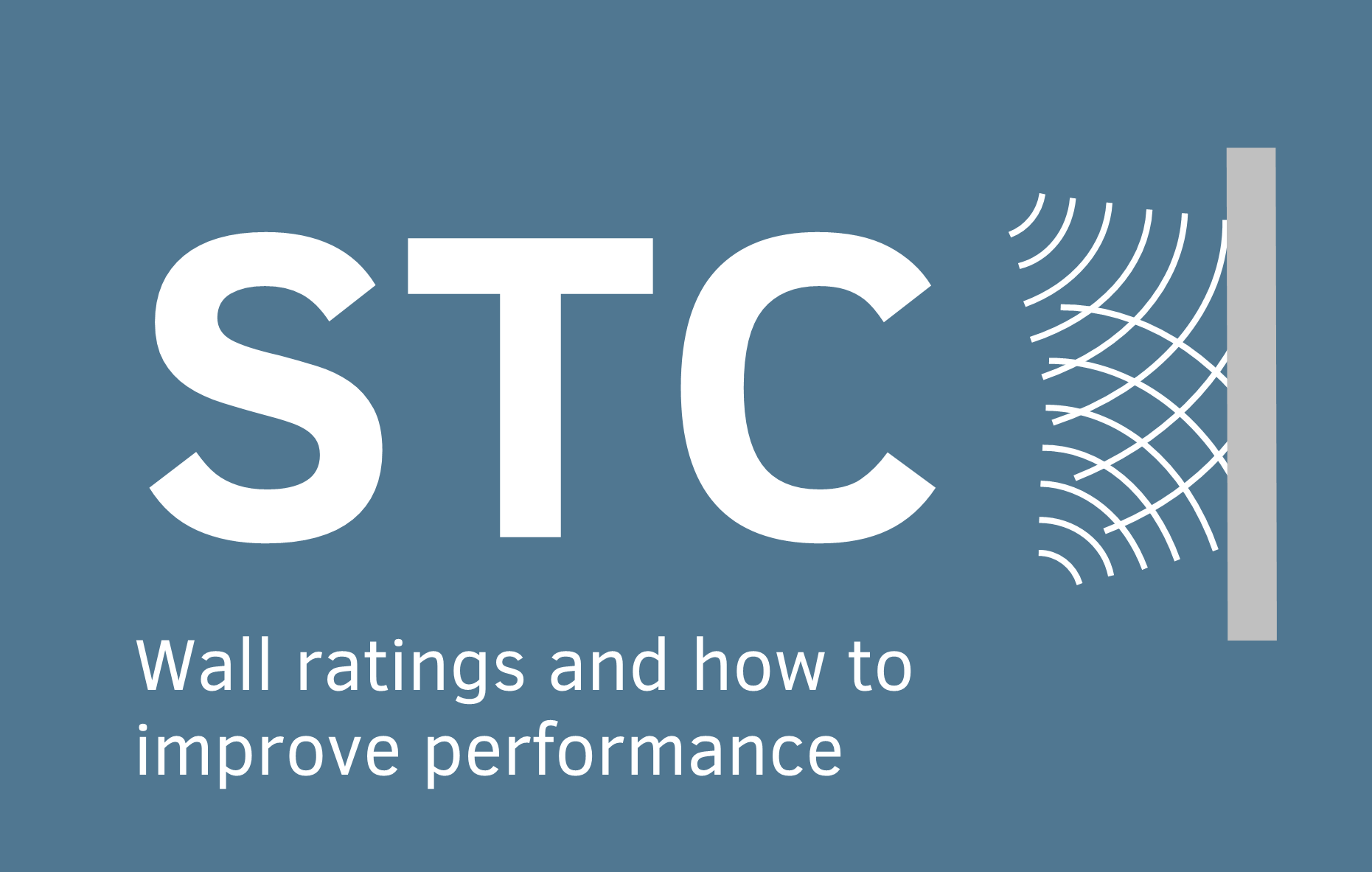What Determines Gypsum Wall STC Ratings, and Why Should I Care?

Let’s take a look at the individual contribution of common wall components:
Studs: Do studs affect the wall STC rating?
Absolutely! For single stud construction, higher STC ratings are achieved with light-gauge steel studs and larger spacing. Where possible, select 25 gauge studs spaced 24 inches o.c. rather than 20 gauge studs 16 inches o.c. to save material costs and increase STC ratings 5 to 10 points, as shown in the following image. Increasing the stud depth can also add a few points.
Insulation: Is it necessary to use special sound attenuation fire batt (SAB or SAFB) insulation rather than the standard fiberglass insulation already being used on site?
Not really. We’ve reviewed hundreds of test reports, and while there are some tests that show minor improvements with SAB, filling stud cavities with standard fiberglass or mineral wool insulation usually provides the same results. The following image compares walls with a few common insulation materials.
Gypsum Board: Does gypsum board (GWB) thickness affect acoustic performance?
That depends. The difference between ½ inch GWB and ⅝ inch GWB is minor, but going from 2 to 3 layers increases STC by about 5 points, and adding a fourth layer increases it another 4 to 5 points (see below).
Resilient Channel: How beneficial is resilient channel (RC)?
Depends on your application. RC can increase STC ratings by as much as 10 points! We have been told by a contractor that it is much less expensive to install RC than an additional layer of GWB. However, the effectiveness of RC can easily be diminished by screwing through to the studs. Special care needs to be taken during installation to only attach GWB to the RC. It cannot be used under GWB where cabinets or other things need to be supported from the studs. In those cases, other types of isolation clips/hangers or wall types should be selected.
Gypsum Board Between Stud Rows: To get a really high STC rating, I should use a single stud wall type with an additional furred out wall, right?
Actually, no. This three panel wall construction will have GWB between stud rows, which reduces the STC rating. The following image shows how keeping the gypsum board on the outside faces of the double stud rows improves the rating about 7 points.
Sealing with Acoustical Caulk: All I need to do is select a high STC wall and the job is done, right?
Unfortunately, the devil is in the details. Sealing all gaps, cracks and penetrations with acoustical caulk is critical in achieving the design STC rating. Just remember the saying,
“If it’s airtight, it’s sound tight.”
Acoustical caulk is a permanently flexible sealant that is designed and tested for this application. Properly sealing the perimeter of walls and penetrations per the caulk manufacturer guidelines should be noted on drawings and included in specifications.
Can’t someone just select the right wall type and STC rating from the Fire Resistance Design Manual?
Maybe, if the construction details are followed exactly. However, many of the STC ratings given in the Manual are for walls constructed with 25 gauge studs at 24 inches o.c.. If the wall is built with 20 gauge studs at 16 inches o.c., it could have a rating that is 5 to 10 STC points lower! Do not go through the effort of selecting wall types without fully understanding how they will perform at one of their primary purposes, reducing noise transmission. Remember, it may be possible to increase the STC and reduce cost at the same time.
Who can assist with partition sound isolation?
ESI Engineering has years of experience in the field of noise control and has provided effective and economical solutions for a wide variety of sound isolation issues. Visit our website for more information or contact us directly to discuss your project.

